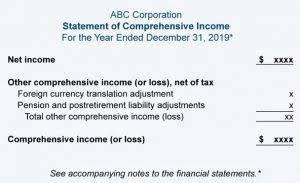
The goal is to build a plan that motivates performance, aligns resources with strategy, and remains flexible enough to adapt what is fp&a when conditions change. The best financial plans start with strategy rather than simply extrapolating past results. Revisit company priorities at the start of each cycle and translate them into financial implications—investment requirements, expected returns, and resource trade-offs. As another example, suppose customer success has been trying a few initiatives to reduce churn and increase NDR.

Advanced analytics and data integration
They are able to decipher the various puzzle pieces that constitute a company’s finances and envision putting the pieces together to formulate a variety of possible growth scenarios. This Actual vs Forecast Analysis example compares between actual expenses and forecasts for a specific time frame, as well as the trend of expenses over time for each expense category. With a modern and integrated financial dashboard, you can easily explore this data in greater detail and extract actionable insights. The cash flow statement shows your company’s cash inflows and outflows over a period of time. It provides information about your company’s ability to generate cash and manage its cash flow. Leading a highly skilled team of wealth managers, Ratan Priya demonstrates expertise in tax, estate, investment, and retirement planning, providing customized strategies aligned with clients’ long-term objectives.
Strategic Planning vs. Financial Planning: Differences and How They Work Together

She has earned her financial planning credentials from the University of Florida and holds the Certified Private Wealth Manager (CPWM) designation, along with NISM degrees. The courses are not only practical but also engaging and very well-structured. They’ve helped me sharpen my technical skills and gain much more confidence in areas like financial modeling, budgeting, and strategic analysis. Yet, most finance teams are stuck in the trenches — cleaning data, reconciling systems, and chasing reports — instead of shaping strategy. Management reporting involves conducting a variance analysis to understand which P&L, CF lines, or leading operational KPIs landed in line with the target and which ones did not.
- Discover what Revenue Forecasting is, why it is crucial for every business, as well as the top forecasting methods to use and examples of each one.
- Strong communication skills are key — translating complex financial data into actionable insights for senior leaders is a core part of the job.
- FP&A teams evaluate future risks and opportunities, helping leadership make informed choices about resource allocation, cost management, and capital planning.
- With a modern and integrated financial dashboard, you can easily explore this data in greater detail and extract actionable insights.
- Accounting, on the other hand, concentrates on historical data, compliance, and ensuring financial records adhere to regulatory standards.
1. Budgeting Essentials
Each horizon serves a distinct purpose but works together to create a cohesive financial roadmap. By subscribing you agree to our Privacy Policy and provide consent to receive updates from our company. Forecasting estimates the tangible results realized by deploying the available budget. Data gets segmented by time — usually by month — and FP&A has extra work for expenses or numbers that cross those timelines. Organizations will also be able to adapt faster to https://www.bookstime.com/ changing business conditions and optimize their performance.
- FP&A adds value by providing data-driven insights, optimizing financial performance, identifying risks and opportunities, and supporting long-term business growth and profitability.
- Advancements in artificial intelligence have made scenario planning like having crystal balls.
- A centralized team is responsible for all FP&A activities, while a decentralized team is responsible for specific FP&A activities within specific business units or departments.
- In FP&A, financial modeling involves building quantitative representations of how the business operates and performs.
- If you are a small business owner, the workings of large companies can often seem abstract and irrelevant.
FP&A is important to maintain financial stability, improve future performance, and achieve long-term goals. Budgeting, Forecasting, Analysis, and Planning are the primary functions of the FP&A, which draws a fair picture for senior management like the CFO or CEO to make any major corporate decision. By providing these critical insights, FP&A enables businesses to stay agile and make proactive decisions that drive growth.

Establishing business goals

These capabilities give finance leaders more time to focus on strategies and tactics. ERP systems are a critical source of financial data from areas such as sales, supply chain, procurement, inventory and payroll. FP&A teams often rely on ERP data to help them create forecasts, plans, budgets and reports. FP&A analysts often use financial modeling to predict which strategies, actions and investments provide the best business outcomes. For example, scenario planning models can simulate what might happen if a business raises or lowers prices or if market conditions, such as demand or the cost of goods fluctuate. With the QuickBooks Accountant proper skill set and a natural inclination for the work, you can carve out a very satisfying career for yourself as a corporate financial analyst.
Some employers may also require a master’s degree or professional certification, such as the CFA (Chartered Financial Analyst) designation. This means regularly reviewing its performance and making changes as needed to improve its effectiveness. While you’ll often hear of different levels of seniority within the Financial Analyst role (such as Junior and Senior Analysts), many of the responsibilities remain similar regardless of seniority. With the right FP&A strategies in place, you can identify and manage risks, seize opportunities, and drive growth. Building credibility and influence is essential for FP&A professionals who want to be seen as trusted partners, not just number crunchers.
#1 – Accumulation, Consolidation, and Verification of Data
But if Landmark Retail, one of the largest omnichannel retailers across the Middle East and Northern Africa (MENA), India and Southeast Asia (SEA) can maximize its efficiency, so can other FP&A teams. With AI systems, FP&A teams can home in on unusual transactions through anomaly detection and variance analysis. The algorithms are trained to learn normal patterns of financial behavior and flag deviations from expected results. This enables FP&A teams to investigate issues faster and maintain financial integrity. ML algorithms are the backbone of this application and must be trained on internal and external signals to help ensure forecasting accuracy. The process included an IT strategy that integrates AI, cloud computing and app modernization.
- Budgeting translates strategic plans and forecasts into actionable financial targets for specific periods, typically a year.
- The corporate budget is usually created annually, and updates are made quarterly as financial conditions change.
- Automated machine learning (AutoML) now makes it easier for you to build, train, and deploy custom ML models yourself.
- While most finance pros prefer Excel, Google Sheets makes numbers more accessible, easier to understand, and transparent.
- FP&A managers must also work closely with executives to support important company decision-making.
Does the software provide actionable insights for better decision-making?
They undertake ratio analysis, examining liquidity, cash flow, leverage, and profitability to see if the company is healthy and well-run compared with its past performance or peer firms. Analysts and investors will also want to know if the company is being fairly valued—an important fact not just for the stock market but also for auditors, unions, regulators, and private equity firms. The digital economy demands more than spreadsheets and department-oriented planning processes.









